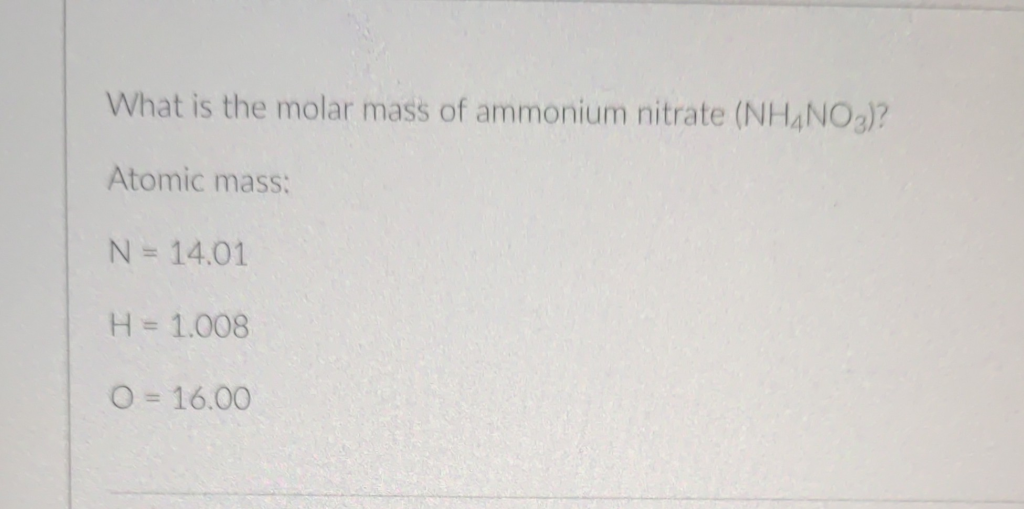
The Correct Answer and Explanation is:
The correct molar mass of ammonium nitrate (NH₄NO₃) is 80.052 g/mol.
To determine the molar mass, we begin by analyzing its molecular formula. Ammonium nitrate consists of two nitrogen atoms, four hydrogen atoms, and three oxygen atoms. Using the atomic masses provided:
- Nitrogen (N): 14.01 g/mol
- Hydrogen (H): 1.008 g/mol
- Oxygen (O): 16.00 g/mol
We now calculate the contribution of each type of atom:
- Nitrogen: 2 × 14.01 = 28.02 g/mol
- Hydrogen: 4 × 1.008 = 4.032 g/mol
- Oxygen: 3 × 16.00 = 48.00 g/mol
Summing these values: 28.02 + 4.032 + 48.00 = 80.052 g/mol
This result represents the molar mass of one mole of ammonium nitrate.
Understanding molar mass is essential in chemistry because it provides the link between the mass of a substance and the number of particles it contains. The molar mass allows us to convert grams of a compound into moles, which are used in balanced chemical equations for stoichiometric calculations.
For example, if one needs to determine how much ammonium nitrate is required to supply a specific number of moles in a reaction, knowing its molar mass makes this computation direct. Likewise, in laboratory settings, accurate molar mass calculations ensure correct reagent measurements, improving experiment precision.
This problem also reinforces the importance of recognizing polyatomic ions and distinguishing them within chemical formulas. Ammonium (NH₄⁺) and nitrate (NO₃⁻) are common ions, and calculating the compound’s molar mass requires summing their individual atomic contributions with proper multiplication. This method ensures clarity and accuracy in interpreting molecular composition.
